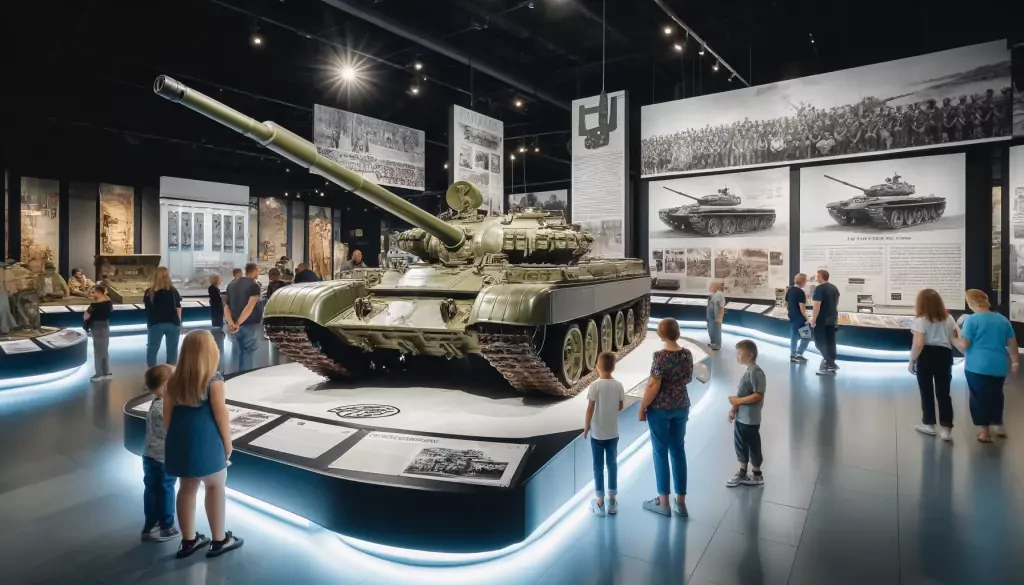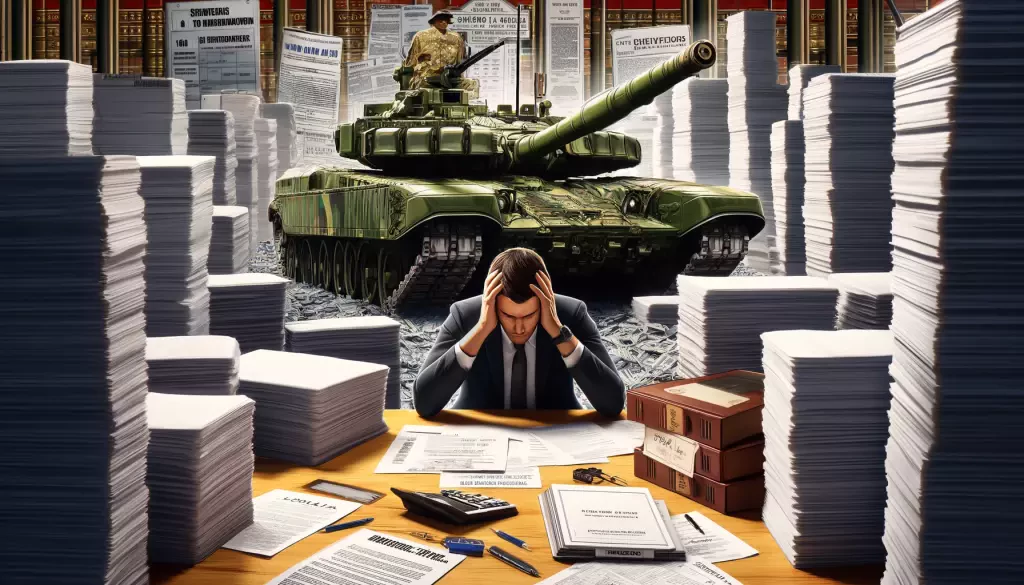
Are you drawn to tanks for sale ads? You may have seen armored vehicles for sale by dealers online, and the T-72 line may catch your eye. However, importing a T-72 tank into the United States can be a complicated process that involves navigating layers of federal regulations, obtaining the required permits, and ensuring you adhere to compliance measures in place.
Russian tanks, like the T-72, a Soviet-era main battle tank, are classified as military vehicles, making their importation heavily regulated due to their classification as an implement of war. The T-72 line was first introduced in Eastern Europe in the 1970s and used by armed forces in the Cold War. This article outlines the steps and considerations involved in importing these kinds of tanks into the U.S.

Legal and Regulatory Framework for Importing Military Vehicles
So, you want to import a T-72 tank - what regulations do you have to follow?
There are a whole host of regulations involved in importing this 41.5-ton armored vehicle which involve multiple government departments.
- Arms Export Control Act (AECA) and International Traffic in Arms Regulations (ITAR): Before importing armored military vehicles, like the T-72, you should read up on the AECA and ITAR, which fall under the U.S. Department of State. These regulations control the export and import of defense-related articles and services. Any item on the U.S. Munitions List (USML) requires a license for importation and this includes armed forces vehicles like tanks.
- Bureau of Alcohol, Tobacco, Firearms and Explosives (ATF): The regulations don't stop there, however. The ATF is the central source that regulates the import of firearms and ammunition under the Gun Control Act (GCA) and the National Firearms Act (NFA). Infantry fighting vehicles, like the T-27 tanks, are classified by the ATF as "destructive devices," and to import and own these you need specific permits and to comply with strict guidelines.
- U.S. Customs and Border Protection (CBP): Finally, your imported tank will meet the U.S. Customs and Border Protection service who enforce import regulations at U.S. borders. As an importer, you must declare the tank and provide all necessary documentation, including any import licenses and permits issued by relevant authorities. CBP ensures compliance with additional restrictions, such as those related to hazardous materials or radiation. The CBP inspection process ensures that the tank meets all U.S. import standards and does not pose any safety or security risks.
Steps to Import a T-72 Tank
- Obtain an Import License: The first step you should take before importing the tank of your dreams is to apply for an import license from the Directorate of Defense Trade Controls (DDTC) within the Department of State. You will need to submit detailed information about the tank, its origin or central source, and the purpose of importation. The application process is rigorous, requiring background checks and a thorough review to ensure compliance with U.S. and international laws. Approval is not guaranteed and can be a lengthy process.
- Compliance with ATF Regulations: Next as the T-72 is considered a destructive device, it must be registered with the ATF. This includes completing ATF Form 6 (Application and Permit for Importation of Firearms, Ammunition, and Implements of War) and possibly ATF Form 1 (Application to Make and Register a Firearm) if modifications are necessary to comply with U.S. law. You will need to undergo background checks to provide information to confirm that the tank is demilitarized and cannot be used as a weapon.
- Customs Declaration and Inspection: Now that you have a license and your tank has been approved for import, you can ship it to the United States. Upon arrival at a U.S. port of entry, the tank must be declared to CBP. You must provide all required documentation, including the import license, ATF forms, and any other relevant permits. The tank will be thoroughly inspected to ensure it complies with U.S. regulations and does not pose any safety or security risks. During the inspection, they will ensure the deactivation of any weapons and that the tank meets environmental and safety standards.
- Transport and Storage: Finally you must move your tank to its final destination! Relocating a T-72 tank within the U.S. requires specialized handling services due to its size and weight. The tank must be moved safely to its final destination, which could involve permits for oversized loads and coordination with local authorities. Make sure you shop around for deals on shifting to get the most reliable and cost-effective service.
Potential Challenges in Importing Military Vehicles
Importing an armored vehicle like a T-72 tank is not for the faint-hearted. It can be a lengthy and expensive process with many challenges including:
- Stringent Approval Process: Obtaining the necessary licenses and permits can be challenging. The DDTC and ATF have strict criteria for approval, and the process can be time-consuming and costly. The importer must demonstrate that the tank will be used for lawful purposes, such as a museum exhibit or historical reenactments.
- Modification Requirements: To comply with U.S. laws, the tank may need to be demilitarized, which involves disabling its weapons systems and ensuring it cannot be used for combat purposes. This process can be complex and expensive, requiring professional expertise and compliance with specific technical standards.
- Legal and Financial Risks: Failure to comply with all regulatory requirements can result in severe penalties, including fines and imprisonment. Additionally, the costs associated with importation, modification, and transportation can be substantial. Importers must be prepared for these financial commitments and potential legal challenges.

Practical Considerations
Before you start your import journey, you should also consider:
- Purpose of Importation: It is crucial to clearly define the purpose of the tank’s importation before starting this process. Whether it is for display in a museum, use in historical reenactments, or as part of a private collection, the intended use must align with U.S. regulations and be thoroughly documented.
- Insurance and Liability: Getting insurance for a military vehicle like the T-72 can be complicated. To cover potential risks of shipping, display, or use of the tank specialized insurance policies are necessary to cover potential risks. These risks include liability, damage during transport, and public safety concerns. You may wish to work with an insurance provider experienced in military vehicles.
- Community and Environmental Impact: As an importer, you should also consider any impact the tank could have on your local community and the environment. This includes ensuring that the vehicle is stored securely, does not contribute to environmental pollution, and adheres to local noise ordinances and zoning laws.
Is it Too Difficult to Import?
With all the regulations and costs involved, you may be thinking importing a tank is too much work - but it has been done before by enthusiasts and collectors. The import involves extensive work to comply with laws and regulations, a considerable financial investment, and the requirement to work with federal agencies so you should be prepared for a lengthy process.
When imported military vehicles, like the T-72 tank, are typically used in museum exhibitions and historical reenactments or are part of private collections. All these uses showcase the cultural and historical significance of these important military vehicles.

Final Thoughts
While difficult, importing a tank is possible if you follow the guidance of governmental bodies that oversee the import of military vehicles into the United States.
For more detailed information and specific guidance, refer to the following official resources:
- U.S. Department of State
- Directorate of Defense Trade Controls (DDTC)
- Bureau of Alcohol, Tobacco, Firearms and Explosives (ATF)
- U.S. Customs and Border Protection (CBP)
Whether you are looking to ship an actual tank kit, an all-terrain vehicle, or just your family car - A-1 Auto Transport is your central source for all your transportation needs. With A-1 Auto Transport, you get a reliable service is the one that will deliver your vehicle safely.
For over 25 years, we've helped thousands of customers safely transport their cars and other vehicles across the country or overseas. Our team handles everything involving the shipping logistics with extreme care from start to finish. You'll get real-time updates and total visibility of your vehicle's journey the whole time.
Get a free quote today and start planning your shipping.






 Share on Facebook
Share on Facebook Share on LinkedIn
Share on LinkedIn Share on Twitter
Share on Twitter




 Google
Google  Instagram
Instagram  Trustpilot
Trustpilot 



